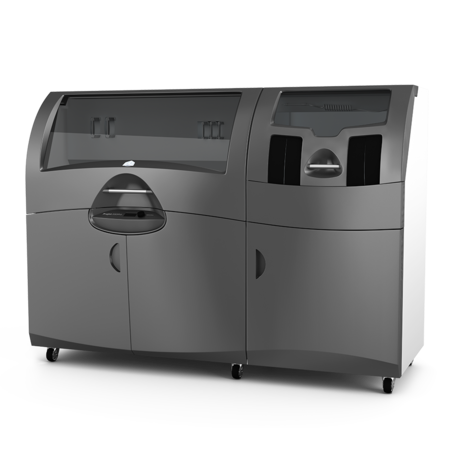"3D printing has proved to be the 'Jewel in the Crown' of our architectural presentations. Both in house and with clients, 3D printing has brought that missing dimension to our daily practice fairly easily. We now have the best machine, all the options, at an affordable price. The many and varied benefits of 3D printing make the machine a bargain." - Robin Lockhart, Associate and Senior Production Mgr., OBM International
Clients hire OBM International (OBMI) to think in three dimensions. The world-class architectural firm demonstrates its prowess in this skill every day by designing luxury hotels, resorts and mixed-use developments around the world.
The creations speak eloquently for themselves. When designs are still in the concept stage, however, OBMI conveys the impact of its ideas through 3D printing. A 3D printer generates 3D physical models from three-dimensional computer-aided design data in much the same way that a desktop printer creates a document from text.
Before turning to 3D printing, the 72-year-old firm, headquartered in Coral Gables, Fla., USA, presented project concepts to clients by creating vivid, two-dimensional photorealistic renderings or computer animations. In its early years, the firm used traditional 2D plans, sketches or the occasional handcrafted model.
Challenge
True Client Understanding
Although these approaches were effective, the third dimension, depth, was sorely missed. Two-dimensional renderings failed to accurately convey a sense of space, mass or scale, nor any clear line between landscaping and building. Wide angle and telescoped perspectives altered shapes. Still images and animated fly-throughs told the observer where he must look rather than giving him the freedom to walk around the model and look where he pleased.
"Two-dimensional renderings can be deceiving," says Robin Lockhart, Associate and Senior Production Manager for OBMI. "They're simply not quite 'there' for the lay person."
Handcrafted models, on the other hand, are laborious, time consuming, expensive, and less accurate than 3D printed models. The rare laser cut model could cost OBMI upwards of $100,000 more than the cost of two or three 3D printers and take months or more to arrive.
OBMI had monitored the development of 3D printing for several years from afar, but for most of that time the equipment was out of reach due to its high costs.
OBMI's CEO, Doug Kulig, noticed that 3D printers were reaching a tipping point in their market. Costs were plummeting and printer capabilities were soaring. Assigned to study the 3D printing options, Lockhart performed an extensive investigation of 3D printers from three vendors. "3D Systems' Color Jet Printers (CJP) had the best combination of quality, color capability, footprint and office friendliness," Lockhart says.
ProJet CJP printers are the fastest 3D printers and the only ones capable of printing in multiple colors two layers per minute in 24-bit color at 600 x 540 dpi resolution. "We feel great about the choice we made," Lockhart says today.
Strategy
"3D Printing" Architectural Models
OBMI architects perform their 3D design work in Google SketchUp CAD software. They use the ProJet CJP printer's full-color capabilities for landscaping, topography, streets and other surrounding features, and then set off the designed buildings or interior in white, the architect's traditional choice. This combination provides visually stunning models that are also easy to comprehend by all parties.
In house, OBMI uses 3D printed models for design critique and assessment. Lockhart anticipates the practice will yield increasingly superior designs and service.
Results
Clients Are Impressed, and "They Get It"
"'Wow!' That's the usual response to the models," reports Lockhart. "Someone inevitably asks, 'how the heck did you do that?' Clients are fascinated with the model and impressed with us for presenting it. The mood of the meeting brightens. Their choice in architects is affirmed. Before we're done, clients usually order more models for marketing their hotels and resorts."
As fun as it is to impress, the models also inform. "We now have a new way to communicate to clients in a form they can deeply comprehend," Lockhart says. "The spatial element really comes through. You can't really know a building from a flat screen any more than you can drive a car by watching a Formula 1 race. And there's something about walking around a site, even a scale model, that reveals the truth of the proposal. Clients crouch down to see it at eye level. They can touch it. They can peer down a hall. This transparent communication produces informed decisions, eliminates costly redesigns and increases client satisfaction. 3D printing has proved to be the 'Jewel in the Crown' of our architectural presentations."
"Both in house and with clients, 3D printing has brought that missing dimension to our daily practice fairly easily," Lockhart adds. "We now have the best machine to suit our needs, all the options, at an affordable price. The many and varied benefits of 3D printing make the machine a bargain."
